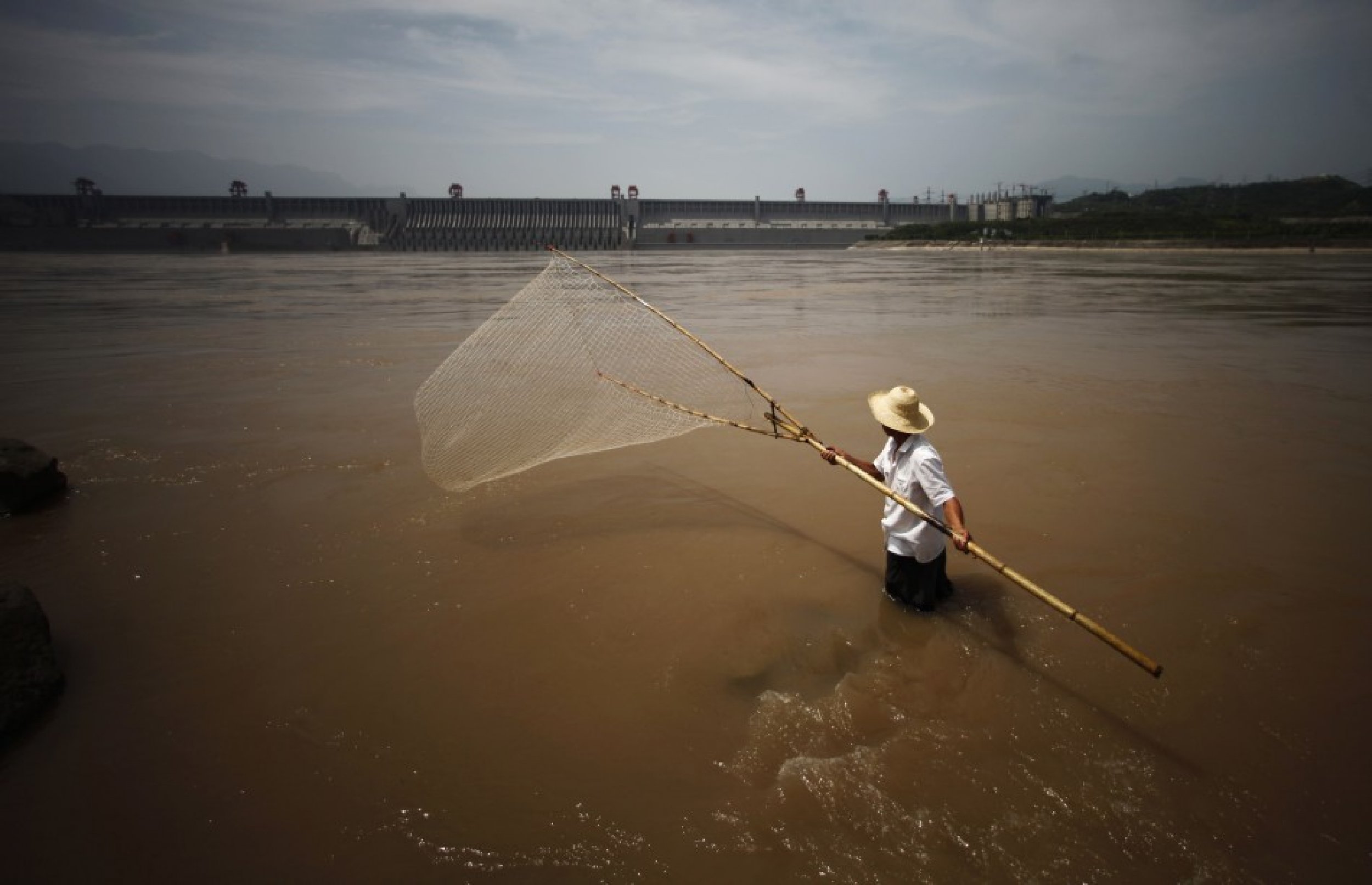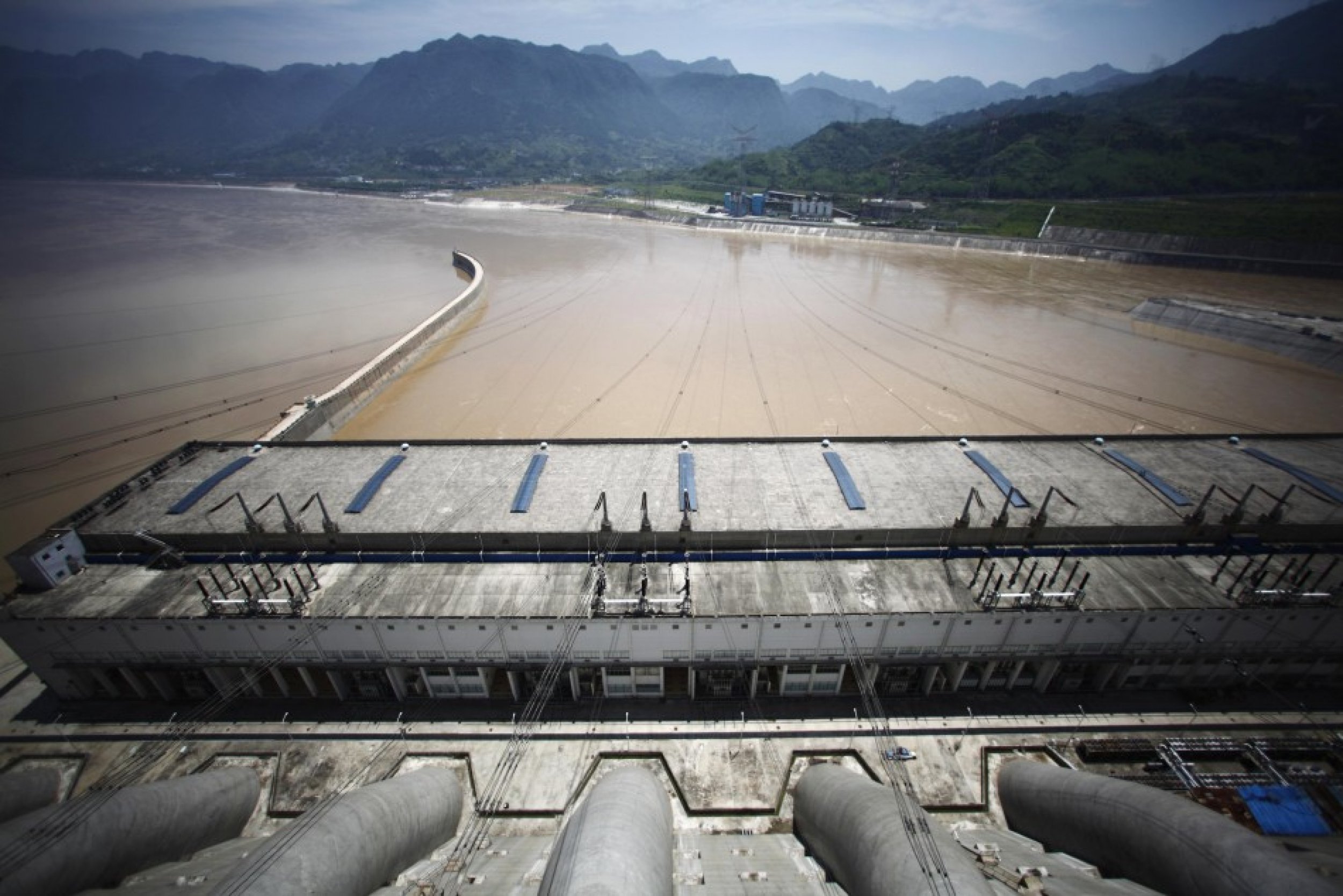Yangtze River Turns Red: Photos Of China's Once Golden, Now Scarlet Pathway [PICTURES]
The Yangtze River, the third longest river in the world, sometimes called the "golden watercourse," mysteriously blushed for the first time on Sept. 6. Residents in the surrounding area near the city of Chongqing, where the Yangtze connects to the Jialin River, literally stopped in their tracks when they noticed their once golden river had turned a shocking shade of red.
For photos of the once golden Yangtze River, check out the pictures in the photo gallery above. For photos of what the newly-red Yangtze looks like, take a look at these photos here.
Nobody is quite sure what caused the color change, but residents carefully crept down to the riverbanks on Thursday and Friday to save some of the red river water in bottles, likely for posterity's sake. When they lifted their bottles from their water, Chinese citizens were surprised to find the water was completely opaque and had a similar orange-red appearance as tomato juice.
Even though the water doesn't look too safe, the new beet-red color of the river didn't stop people from going about their business. According to the Daily Mail, workers who rely on the Yangtze as their main source of income, including fishermen, continued about their daily work as if nothing were unusual. Officials are investigating the river's transformation, as nobody is quite sure what caused it.
The Yangtze River, Wikipedia explains, is key to the vitality of both China's economy and culture:
"The prosperous Yangtze River Delta generates as much as 20% of the PRC's GDP. The Yangtze River flows through a wide array of ecosystems and is itself habitat to several endemic and endangered species including the Chinese alligator and the Yangtze sturgeon. For thousands of years, people have used the river for water, irrigation, sanitation, transportation, industry, boundary-marking and war. The Three Gorges Dam on the Yangtze River is the largest hydro-electric power station in the world."
Yangtze River Turns Red: How Did It Happen?
As officials investigate the Yangtze, early predictions from scientists say the red reaction was likely a result of pollution.
Emily Stanley, a limnologist (study of freshwater science) at the University of Wisconsin, said it's possible microorganisms could have caused the change in the river.
"When water turns red, the thing a lot of people think of first is red tide," Stanley told LiveScience. "But the algae that causes red tide is a marine group and not a freshwater group, so it's highly, highly unlikely that this is a red-tide-related phenomenon."
It wouldn't be surprising to believe pollution is the cause. According to Wikipedia, the Yangtze River "has suffered from industrial pollution, agricultural run-off, siltation, and loss of wetland and lakes," which have made flooding considerably worse, especially given the heavy rainfall in that region of China. Even though some sections of the Yangtze are currently protected as nature reserves, the Daily Mail noted that last December, the Jian River, which connects to the Yangtze, had turned red "after becoming polluted by a powerful dye." Reports say the dye was dumped into a storm drain in the city of Luoyang by two illegal dye workshops. The factories were eventually raided by officials and their machinery was disassembled.
The Yangtze's redness was most pronounced near Chongqing, but Chinese residents have also reported the red water at several other points. Officials still investigating the cause.






© Copyright IBTimes 2024. All rights reserved.






















